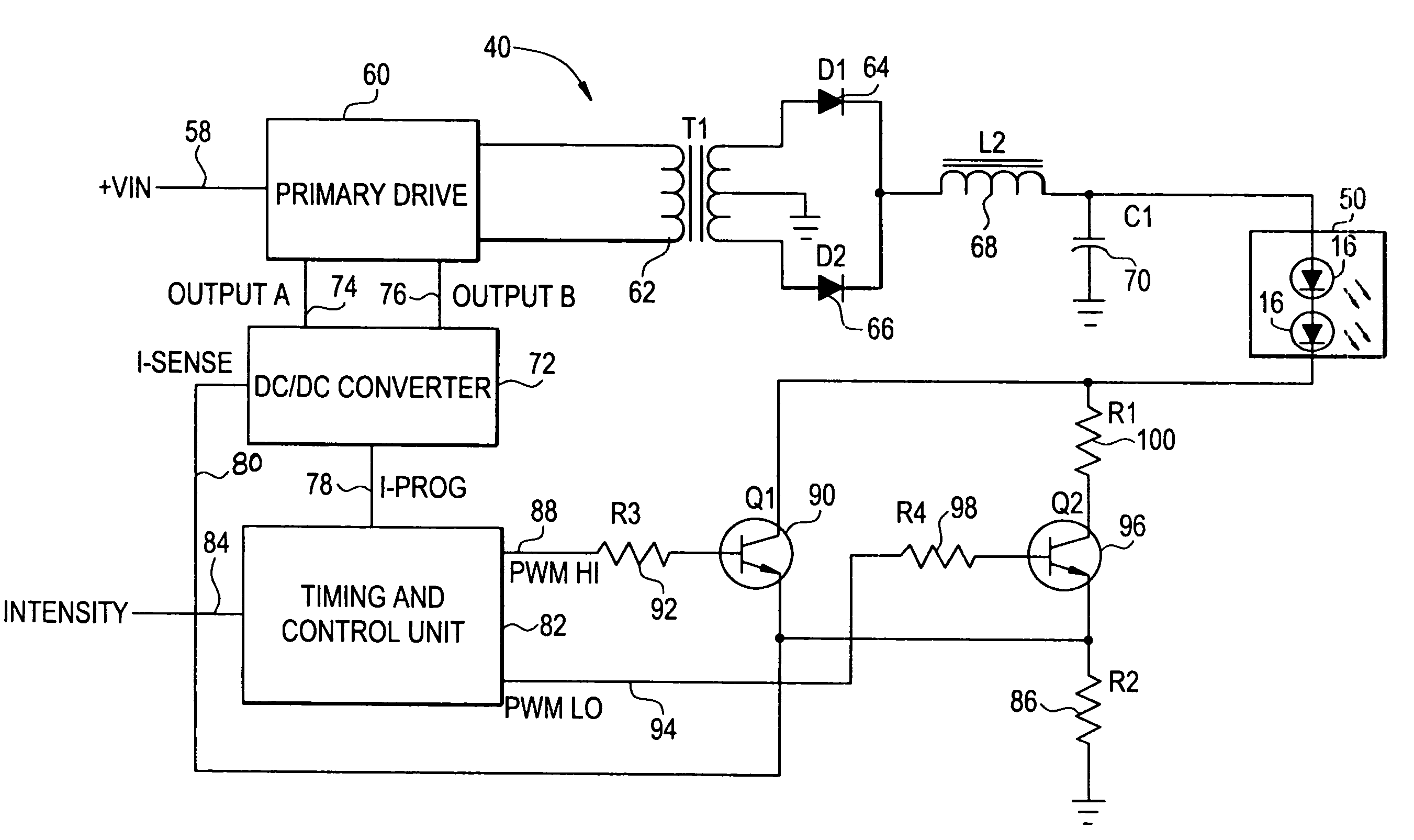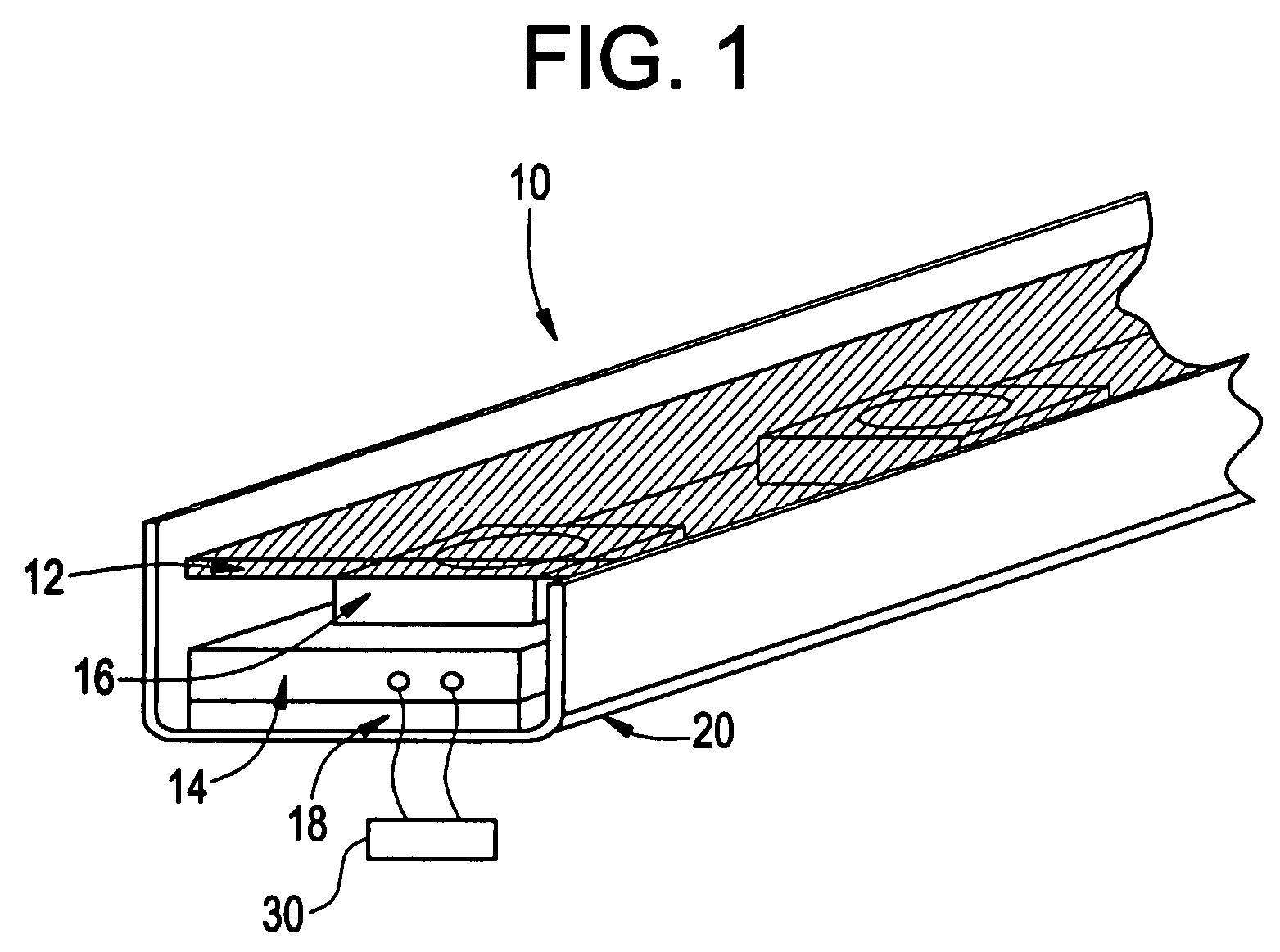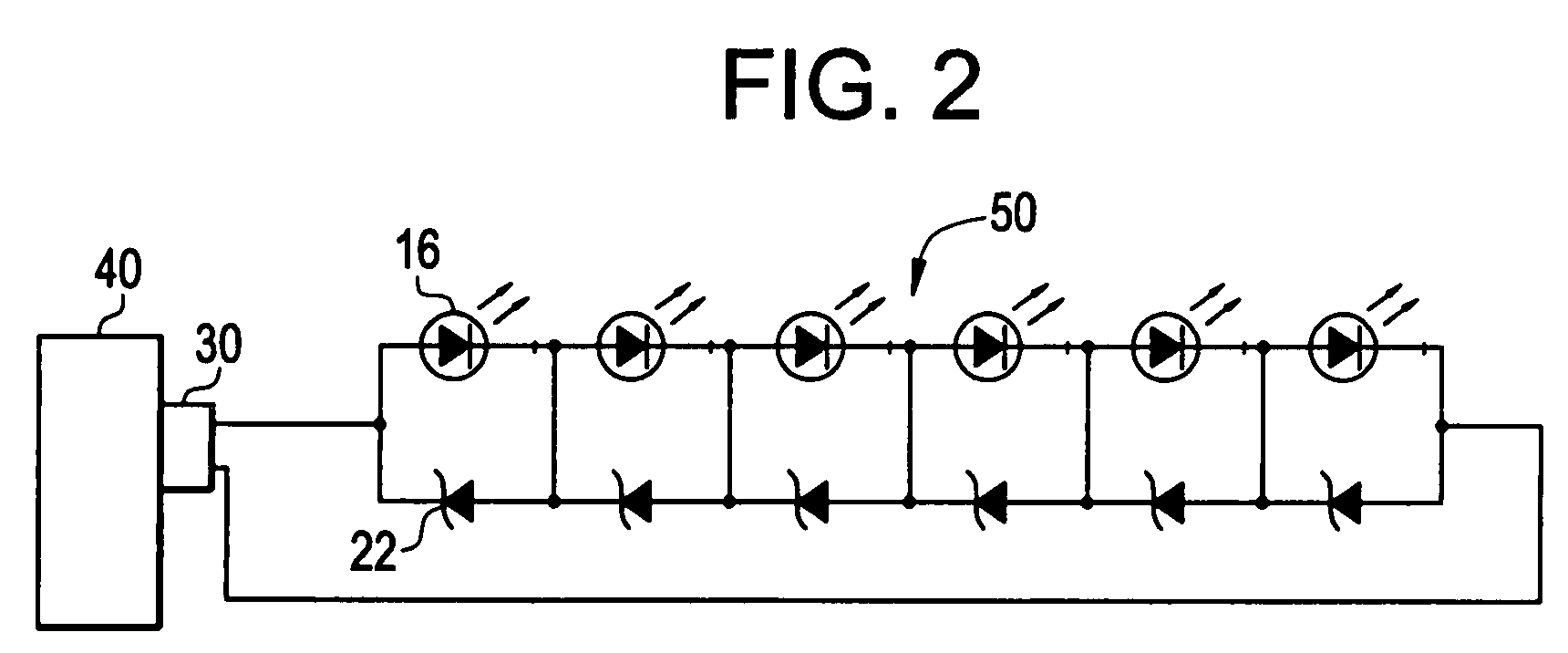Method, apparatus, and system for driving LED's
a technology of led backlighting and led light, which is applied in the direction of pulse generators, pulse techniques, instruments, etc., can solve the problems of flickering observed by the human eye, inefficient power delivery based on losses, and the use of led backlight units also presents challenges
- Summary
- Abstract
- Description
- Claims
- Application Information
AI Technical Summary
Benefits of technology
Problems solved by technology
Method used
Image
Examples
Embodiment Construction
[0013]FIG. 1 shows an LED backlight unit 10 that can be used to provide edge lighting for a LCD display. The main components of the LED backlight unit 10 include the window 12, printed circuit board 14, LED's 16, and thermal conductive material 18. The LED backlight unit 10 is configured so as to fit within the edge rail housing 20 of the backlight light source. Alternatively, the LED backlight unit 10 can also include the edge rail housing 20. The window 12 may be of a clear or opaque material or may be a specialized optical element providing the required light focusing and diffusion. The printed circuit board 14 provides the mounting surface for the LED's 16 and can be configured to allow the thermal material 18 to contact the underside of the LED's 16. A connector 30 for interfacing with an LED driver 40 to provide the necessary voltage and current is connected to the printed circuit board 14. The thermal conductive material 18 provides the necessary thermal interface between the...
PUM
 Login to View More
Login to View More Abstract
Description
Claims
Application Information
 Login to View More
Login to View More - R&D
- Intellectual Property
- Life Sciences
- Materials
- Tech Scout
- Unparalleled Data Quality
- Higher Quality Content
- 60% Fewer Hallucinations
Browse by: Latest US Patents, China's latest patents, Technical Efficacy Thesaurus, Application Domain, Technology Topic, Popular Technical Reports.
© 2025 PatSnap. All rights reserved.Legal|Privacy policy|Modern Slavery Act Transparency Statement|Sitemap|About US| Contact US: help@patsnap.com



